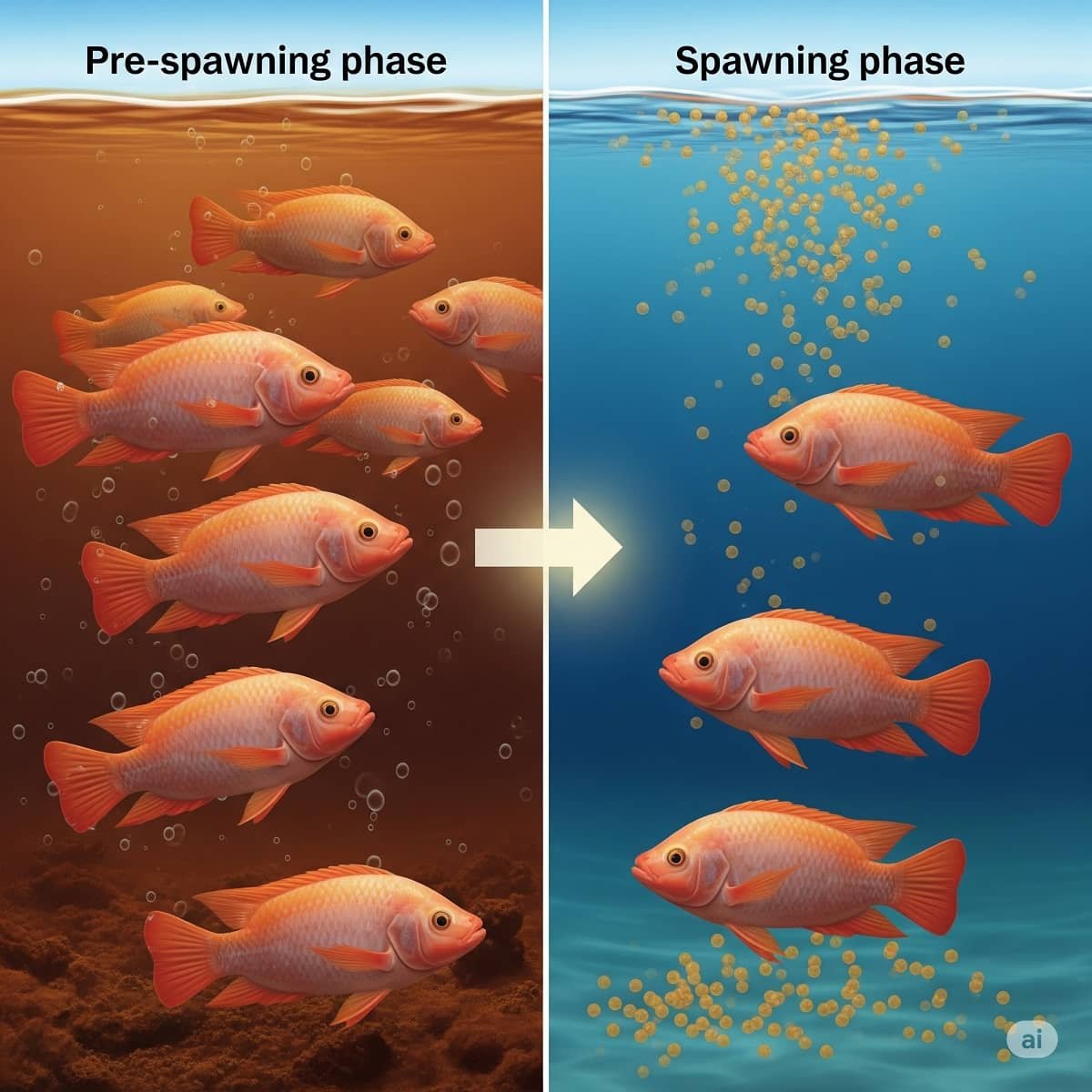Breeding Nile tilapia (Oreochromis niloticus) is a critical component of the aquaculture industry, and the quest for more sustainable and efficient practices in hatcheries is essential.
A recent study conducted by scientists from the Ecole Nationale Supérieure des Sciences de la Mer et de l’Aménagement du Littoral (ENSSMAL) aimed to assess the potential of applying biofloc technology (BFT) in tilapia hatcheries, which could revolutionize how we breed these species.
The study was divided into two key experiments to evaluate the impact of BFT on the reproduction and growth of Nile tilapia fry.
Experiment 1: Reproduction in a Biofloc System
The first experiment focused on determining the effect of maintaining tilapia broodstock in a BFT system compared to the conventional clear-water system in terms of their reproductive performance and the quality of their offspring.
Researchers placed a total of 45 tilapia broodstock in each of the two treatments (BFT and control) for 2 months. Females in advanced maturity were transferred to four spawning tanks (800 L) at a density of eight individuals per tank. Reproduction took place over 2 months, with all females inspected weekly to verify the presence of eggs.
Experiment 2: Impact on Growth and Fry Health
The second experiment, lasting 43 days, analyzed the effect of the BFT system on the growth, feed utilization, activity of digestive enzymes, and antioxidant status in the early stages of tilapia fry.
A total of 540 fry were assigned to six glass aquariums (60 L capacity). An experimental group was raised using the BFT system with daily sugar addition at a C/N ratio of 15/1, compared to a control group raised in clear water. Fry were fed commercial pellets three times a day at different feeding rates.
Promising Results
The results of these experiments yielded the following findings:
Stay Always Informed
Join our communities to instantly receive the most important news, reports, and analysis from the aquaculture industry.
- In the first experiment, it was found that tilapia fecundity, hatching rate, egg and larval size, and larval resistance to stress tests showed no significant differences between the treatments.
- In the second experiment, after 20 days of fry rearing, there was a 29% increase in daily weight gain in fry raised in the BFT system compared to the control group. Additionally, the BFT system demonstrated better feed conversion than the control treatment. Fry raised in the BFT system also exhibited significantly higher activities of alpha-amylase and catalase enzymes compared to the control group.
Conclusion
In summary, these results suggest that biofloc technology (BFT) can be a viable and sustainable option for Nile tilapia hatcheries. BFT did not negatively impact the reproductive performance of tilapia broodstock and, more importantly, significantly improved the growth and feed efficiency of tilapia fry.
This has significant implications for the aquaculture industry as it can contribute to the sustainable production of Nile tilapia and a reduction in their environmental footprint. The application of biofloc technology in tilapia breeding promises a brighter and more sustainable future for this important aquaculture species.
Contact
Ammar Dilmi
Département des ressources vivantes, Ecole Nationale Supérieure des Sciences de la Mer et de l’Aménagement du Littoral (ENSSMAL), Alger, Algeria;b Station expérimentale de pisciculture marine, Centre National de Recherche et de Développement de la Pêche et de l’Aquaculture (CNRDPA), Bou-Ismail, Algeria
Email: dilmi80@gmail.com
Reference
Ammar Dilmi, Hamza Mogaf, Hichem Lourguioui & Wahid Refes (2023) Biofloc technology application in Nile tilapia (Oreochromis niloticus, L.) hatcheries: effect on the reproductive performance, offspring quality, growth performance, and physiological parameters of fry, Journal of Applied Aquaculture, DOI: 10.1080/10454438.2023.2276408
Editor at the digital magazine AquaHoy. He holds a degree in Aquaculture Biology from the National University of Santa (UNS) and a Master’s degree in Science and Innovation Management from the Polytechnic University of Valencia, with postgraduate diplomas in Business Innovation and Innovation Management. He possesses extensive experience in the aquaculture and fisheries sector, having led the Fisheries Innovation Unit of the National Program for Innovation in Fisheries and Aquaculture (PNIPA). He has served as a senior consultant in technology watch, an innovation project formulator and advisor, and a lecturer at UNS. He is a member of the Peruvian College of Biologists and was recognized by the World Aquaculture Society (WAS) in 2016 for his contribution to aquaculture.




